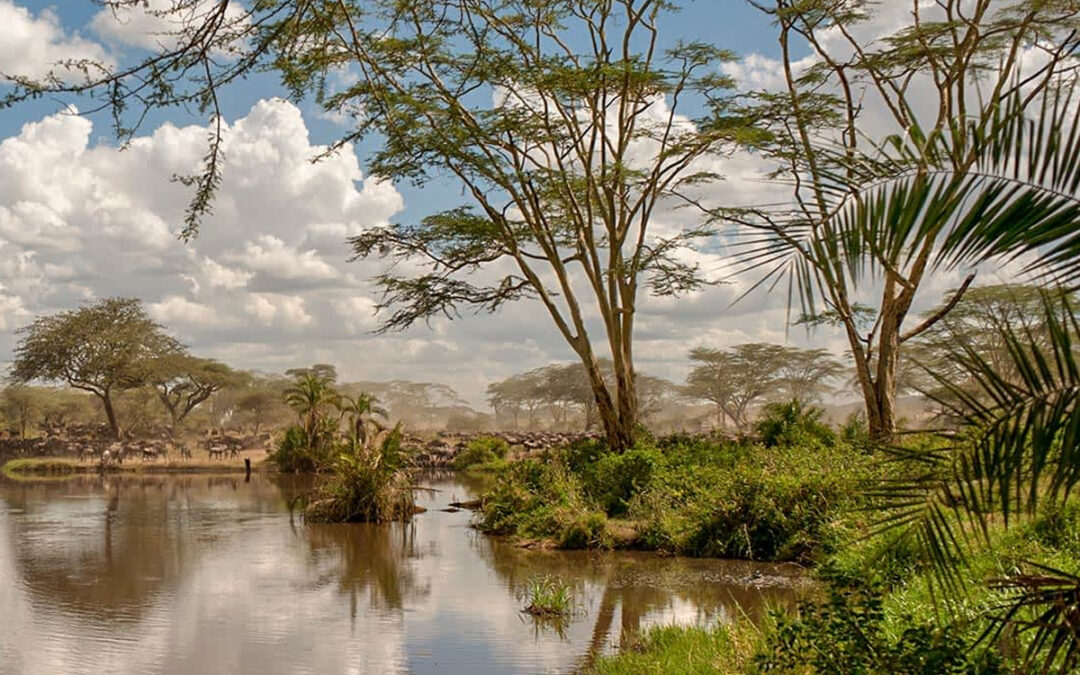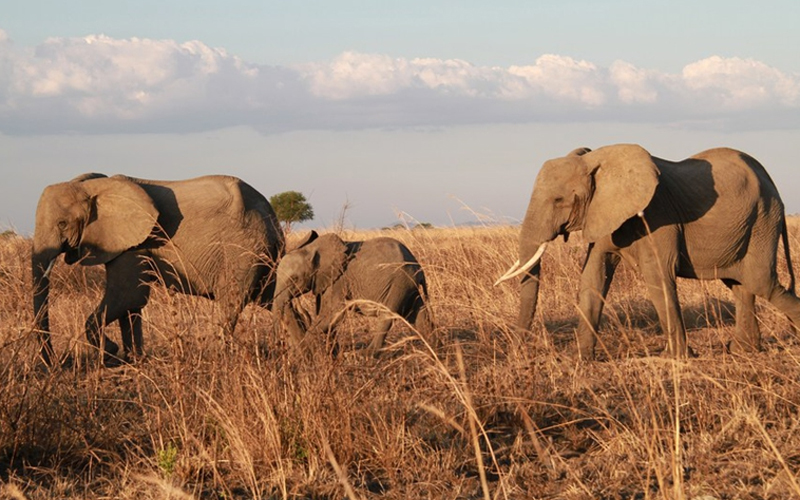New National Parks Tanzania 2025 Safari
Tanzania is home to some of the most iconic national parks in the world, renowned for their diverse wildlife, breathtaking landscapes, and unique ecosystems. As the country continues to grow as a premier travel destination, Tanzania’s national parks are expanding to offer even more opportunities for adventure and exploration.
This expansion is not just about opening new areas for tourism, but also about bolstering conservation efforts, ensuring that the rich biodiversity of Tanzania is preserved for future generations. In 2025 and beyond, travelers can expect to discover new, untouched landscapes, rich wildlife, and more sustainable travel options. This guide will take you through the new areas to explore, so you can make the most of the latest developments in Tanzania’s national park system.
Tanzania’s National Parks: A Quick Overview
Tanzania is home to some of the most famous national parks in Africa, including Serengeti National Park, Ngorongoro Crater, and Tarangire National Park. These parks are globally recognized for their role in the Great Migration, big five safaris, and their stunning landscapes.
National parks are vital for the preservation of wildlife, supporting populations of elephants, lions, giraffes, rhinos, and many endangered species. They also serve as critical habitats for flora and fauna, providing protected areas where both plant and animal life can thrive.
However, the need for conservation has grown, and Tanzania is responding by expanding and developing new areas to explore, not only to protect wildlife but also to improve the tourism infrastructure and provide more sustainable options for travelers.
The Expansion of Tanzania’s National Parks
Tanzania’s national parks are expanding due to several key reasons, including the need to preserve endangered species, improve tourism management, and protect fragile ecosystems. Expanding the national parks allows for greater conservation efforts, while also giving travelers a chance to experience more remote, less-crowded areas that were previously inaccessible.
This expansion also reflects Tanzania’s commitment to its vision for sustainable tourism. By opening new parks and reserves, Tanzania hopes to share its natural beauty with the world while maintaining a strong focus on wildlife protection and the well-being of local communities.
New Areas to Explore: The Southern Circuit
One of the most exciting developments in Tanzania’s national parks is the growth of the Southern Circuit. Traditionally less explored compared to the Northern Circuit (which includes the Serengeti and Ngorongoro), the Southern Circuit is now drawing more attention thanks to the expansion of several parks and reserves.
Key Parks in the Southern Circuit:
- Selous Game Reserve: One of the largest game reserves in the world, Selous is a UNESCO World Heritage site and is now part of the expanded Nyerere National Park. This park offers unique safaris, especially for those looking for a more remote and private experience.
- Ruinsori National Park: Known for its striking landscapes, including mountain ranges, dense forests, and river valleys, this area offers rugged treks and opportunities to see rare wildlife like wild dogs and cheetahs.
- Mikumi National Park: This park, located near the Selous, is becoming increasingly accessible and offers a chance to spot a variety of big game and bird species.
Why the Southern Circuit Is Becoming a Top Destination:
With the expansion of Selous and other reserves in the south, this region is quickly becoming a must-visit destination for wildlife enthusiasts. Fewer tourists and stunning landscapes make the Southern Circuit perfect for those seeking a more intimate safari experience away from the crowds.
New Areas in the Northern Highlands
While the Southern Circuit gains popularity, Tanzania is also expanding national parks in the Northern Highlands. These regions have long been known for their breathtaking landscapes and abundant wildlife. New parks in this area offer travelers the chance to see untouched landscapes and wildlife not typically found in more popular parks like Serengeti.
Exploring the Beauty of These Regions:
The Northern Highlands are home to dense forests, mountain ranges, and rivers, making them perfect for both safari tours and trekking. This area has been increasingly protected as part of Tanzania’s national park expansion efforts.
New Conservation Initiatives:
In addition to increasing protected areas, Tanzania has introduced new conservation initiatives in these regions, such as creating wildlife corridors and working closely with local communities to improve sustainable farming practices that minimize the negative impacts on the environment.
The Eastern Parks: Coastal Beauty and Wildlife
Tanzania’s eastern coastal regions are home to some of the newest national parks to explore. These parks combine the best of beaches, marine life, and tropical ecosystems with the diversity of wildlife in inland areas.
Coastal National Parks:
- Saadani National Park: A unique blend of beach and safari, Saadani is the only park in Tanzania where you can experience safari and beach activities in one location.
- Jozani Forest: Home to the famous red colobus monkeys, Jozani offers visitors a chance to explore Tanzania’s tropical forest ecosystem and see endangered species.
Exploring the Rich Cultural Diversity:
In addition to its natural beauty, the eastern parks are home to rich cultural traditions. The region is home to the Swahili coast, where the blend of African, Arabian, and Indian influences create a cultural melting pot that visitors can explore alongside the natural attractions.
Key Developments and Infrastructure Projects
To support the growing interest in these expanded areas, Tanzania has invested heavily in improving infrastructure. New roads, airstrips, and visitor facilities are being developed to enhance access to these parks.
Improved Access to Remote Parks:
Many of Tanzania’s newly expanded parks were once remote and difficult to access, but with the construction of new roads and transportation hubs, visitors can now travel more comfortably to explore these regions.
Enhanced Tourist Facilities and Experiences:
From luxury lodges to mobile tented camps, the expansion of facilities in these parks ensures that visitors can enjoy the natural beauty of Tanzania while experiencing high-quality services.
Benefits of the Expansion to Wildlife Conservation
By expanding its network of national parks and reserves, Tanzania is strengthening its commitment to wildlife conservation. The increase in protected areas helps safeguard endangered species and ecosystems, ensuring that the biodiversity of the region remains intact.
Preserving Endangered Species:
Tanzania’s new national parks provide vital habitats for some of Africa’s most endangered species, including the African wild dog, cheetahs, and black rhinos. These parks are crucial for their survival.
Ecotourism and Responsible Travel in Expanding Parks
As Tanzania’s national parks expand, ecotourism plays an increasingly important role in supporting conservation efforts. Travelers are encouraged to be responsible and minimize their impact on the environment while experiencing the beauty of these newly protected areas.
Sustainable Practices for Travelers:
Visitors can contribute to sustainable tourism by choosing eco-friendly accommodations, supporting local communities, and participating in responsible wildlife viewing.
Unique Wildlife and Flora in the Expanded Parks
Each of Tanzania’s newly expanded parks offers unique wildlife sightings. Expect to encounter rare species, including endemic plants and animals not found in other parts of Africa.
Exploring Tanzania’s New National Parks: A Traveler’s Guide
With so many new areas to explore, planning a trip to these parks requires some thought. The best times to visit are during the dry season (June to October), when wildlife is easier to spot.
The expansion of Tanzania’s national parks opens up new frontiers for wildlife lovers, conservationists, and adventure seekers alike. With diverse ecosystems, rare wildlife, and increasing accessibility, these newly protected areas promise unforgettable experiences for visitors.
FAQs
1. What is the best time of year to visit Tanzania’s new national parks?
The best time to visit is during the dry season (June to October), which provides the clearest views of wildlife.
2. Are the newly expanded parks safe for tourists?
Yes, Tanzania takes significant steps to ensure the safety of tourists, with trained guides and well-maintained facilities in place.
3. Can I visit the new parks as part of a guided safari?
Yes, most of the newly expanded parks offer guided safari tours to ensure a safe and enriching experience.
4. How are conservation efforts supported in the expanded areas?
Conservation efforts are supported through sustainable tourism, local community involvement, and wildlife protection programs.



